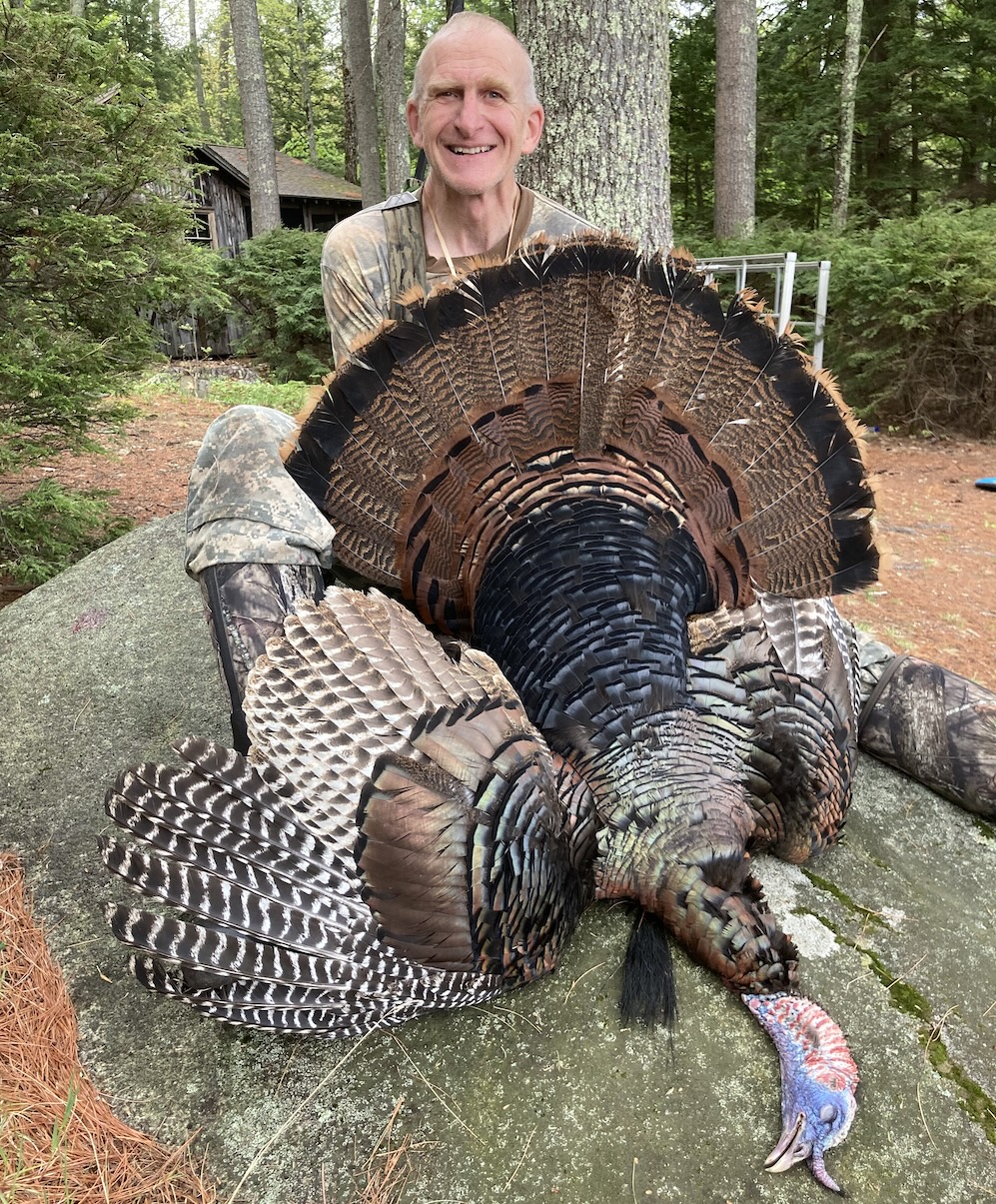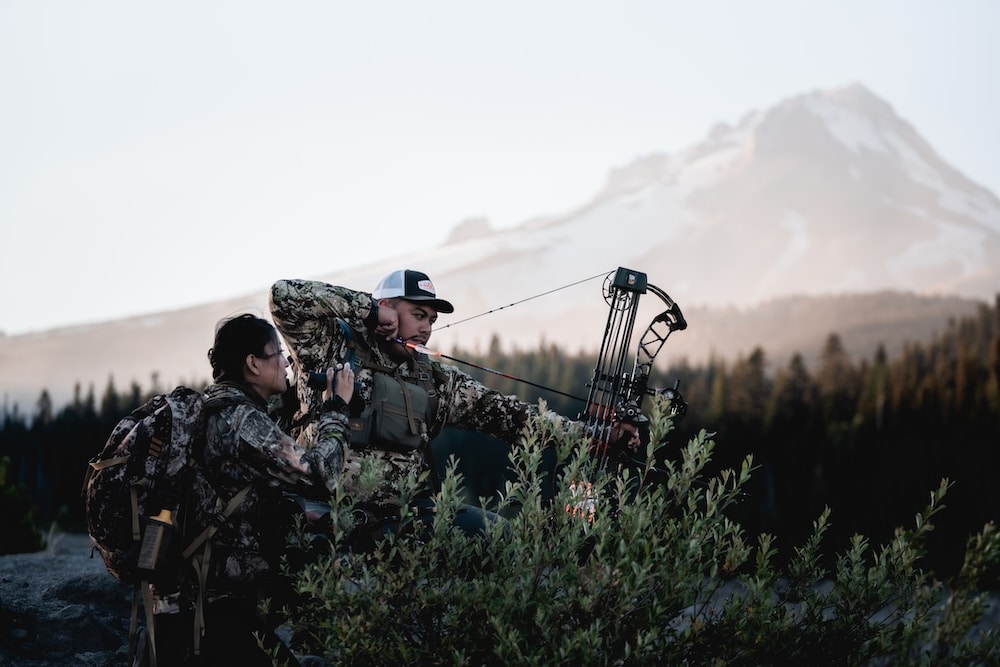There are unique bowhunting opportunities to be found in all 50 states. Different game species live in different habitats and climates, and hunting regulations and license requirements change when you cross state lines. If you’re planning to take an out-of-state bow hunt, it’s best to do some research and prepare in advance to know what to expect.
Gordon Batcheller, 67, is an avid turkey hunter who bowhunts several states throughout the Northeast. He has a property in New Hampshire, lives in New York state, and regularly drives to Maine, Vermont and Massachusetts to hunt. He enjoys hunting in different states because he can prolong his season, and he likes new challenges and the sense of accomplishment he feels after completing a trip.
He broke down for us some of the most important things to know when bowhunting different states, and shared a few tips for making the transition less stressful.

Check the hunting regulations in the state you’re visiting very closely. Photo Credit: Gordon Batcheller
“Start with the basics of looking at the regulations, so you know when the opportunities exist and what equipment you need or will be required to use,” he said.
Batcheller is a certified wildlife biologist and retired chief wildlife biologist for the state of New York, so he’s hyperaware of differing bowhunting regulations among states. Some hunters don’t think about regulation changes between states, but he said understanding regulations is the most important thing to learn when hunting different states.
“Most hunters, especially new ones, simply want to go hunting and comply with all laws and regulations, but when they open a regulation book it can be a bit terrifying,” he said. State fish and wildlife agencies are making tremendous progress in improving their delivery of information related to hunting, especially the laws and regulations, but the details of those requirements can be difficult to understand. When a hunter goes afield in more than one jurisdiction, the details matter!
For example, when Batcheller pursues turkeys in New York, his compound bow must have at least a 35-pound draw weight; Massachusetts requires a 40-pound minimum. Each state he hunts requires hunters to have a 7/8-inch minimum cutting diameter broadhead, but there are some states that require a 1-inch minimum. Additionally, New Hampshire requires bowhunters to label each arrow with their name and address. Crossbow regulations vary widely across the states, too.
Because Batcheller can hunt two states in one day, he makes sure everything about his setup meets all the minimum requirements for each state he’s hunting.
Although it can be cumbersome to flip between different state regulations and adjust accordingly, it’s necessary and there’s hope for more consistency in the coming years.
“When bowhunting-specific regulations were being created in the ’50s and ’60s, state wildlife agencies often worked independently without coordination with neighboring jurisdictions” he said. “Now, states are coordinating closely via R3 programs, and changing their regulations to make them less confusing and more consistent with other states to help bowhunters stay compliant.”
The Archery Trade Association is working on behalf of Bowhunters United members to monitor state bowhunting regulations to ensure they’re easy to understand and follow. In April 2023, staff reviewed all 50 states’ 2022-23 bowhunting regulations and encouraged state wildlife agencies to revise complex bowhunting laws, especially those regarding equipment metrics and specifications. As a result of ATA’s recommendations, 250 favorable changes have been made across 49 states since 2017, helping to reduce participation barriers.
If you need help understanding hunting regulations in any state, please contact the state wildlife agency for an explanation.

Review public lands and ask permission to hunt private lands. Photo Credit: John Hafner
“If you don’t live in a location, it takes more effort to find spots you really believe in,” Batcheller said.
Fortunately, state wildlife agencies provide data on harvest and population trends for many zones, counties and wildlife management areas. Batcheller encourages bowhunters to review the available data to help them identify productive spots. Once you home in on a location, either ask for permission to use private land or use maps to check access points on public lands. Digital scouting is extremely helpful if you can’t personally traverse the area before your hunt.
“Try to befriend someone who can keep you involved in what they’re seeing in the area you plan to hunt,” Batcheller said.
Finding knowledgeable resources who are willing to communicate regularly will help you stay on top of timely trends and happenings. If you can’t find a personal contact local to the area you’re planning to hunt, try connecting with staff at a local archery pro shop or the state wildlife agency. Most people are willing to share general information — and sometimes detailed information — with out-of-state hunters.
You’ll have to make purchases like buying a nonresident hunting license and gas or a plane ticket for travel, but limit how much you spend on gear. “Understanding the behaviors of the species you’re pursuing is far more important than buying a $100 decoy,” Batcheller said.
In other words, skip buying all the gadgets and use the money you saved to spend a few extra days afield to get your bearings and better understand the animals and terrain you’re hunting.

If you’re going to hunt in an area with a high elevation, you need to prepare by strengthening your lungs. Photo Credit: BU
To understand the regulations, pinpoint access points, find local resources and create a budget, you must give yourself ample time to organize all the details. “Factor in the time you need to gather information and plan well in advance of your trip,” Batcheller said. Also consider your destination’s terrain and temperature so you can physically prepare.
Bowhunting a new state is both exciting and challenging. Make the most of your adventure by learning the nuances between different states and embracing all the changes that make the area unique.